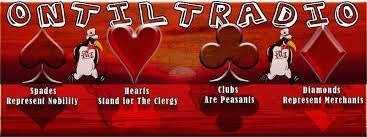Introduction to the Community
Welcome to our vibrant community, a space created for individuals looking to enhance their skills and build a successful bankroll across various gaming platforms. At the heart of our community lies a commitment to fostering a supportive environment where members can learn, share experiences, and grow together. We believe that skill improvement and bankroll management should not be daunting tasks but rather rewarding journeys that every member can embark on.
Our mission is to provide resources that empower you to develop your abilities and make informed decisions in gaming. We recognize that each member comes with unique experiences and skill levels. Hence, our community is designed to cater to a diverse audience, from novices eager to learn the basics to experienced players aiming to refine their strategies. Here, every question is valued, and every success story inspires us further.
Members of our community will find an array of resources readily available to support their growth. From instructional articles that cover fundamental strategies to advanced techniques, our curated content aims to enhance understanding and application of the skills needed to excel. In addition to written resources, we offer webinars and workshops led by experienced players who share insights that can drastically improve performance. These informative sessions encourage interaction and allow for real-time engagement with the community.
Furthermore, our forum provides a platform for members to connect, share tips, and discuss their progression. It serves as a hub for collaboration, where players can exchange ideas on bankroll management, game strategies, and personal experiences. By encouraging open communication, we ensure that every member feels valued and motivated to contribute. Join us in this enriching environment, where your path to skill improvement and bankroll building is supported by fellow enthusiasts.
The Importance of Bankroll Management
Bankroll management (BRM) is a vital principle for anyone engaged in gaming, whether it be poker, sports betting, or online casino games. Essentially, BRM refers to the strategies and practices players adopt to allocate their funds wisely and prevent financial ruin while maximizing their gaming experience. This concept is paramount for long-term success; players who neglect effective bankroll management often find themselves facing potential losses that could lead to going broke.
One primary reason that BRM is essential is that it instills discipline among players. By setting specific budgets for gaming sessions, individuals can prevent emotional or impulsive actions that often lead to overspending. It’s advisable for players to determine a percentage of their total bankroll to risk on any single wager, enabling them to withstand losing streaks without exhausting their funds. For instance, a common recommendation is to bet no more than 1-5% of the total bankroll on a single game or activity, allowing players to remain in the game longer and mitigate the effects of variance.
Furthermore, effective bankroll management helps determine the appropriate stakes and limits that match an individual’s risk tolerance and skill level. This alignment is crucial since it not only maximizes the enjoyment of the game but also emphasizes strategic decision-making over mere chance. Players should regularly assess their bankroll and adjust their stakes accordingly to reflect changes in their financial situation or skill development.
In summary, adopting a robust bankroll management strategy is indispensable for game enthusiasts striving for consistent success. By fostering discipline, establishing appropriate betting limits, and regularly reviewing their financial situation, players can enhance their overall gaming experience and significantly reduce the risk of financial loss. Consequently, building a solid foundation in bankroll management is a critical step toward skill improvement and sustainable success in gaming.
Leveraging Available Articles
In our community, we offer a vast array of articles designed to enhance your knowledge and skill set, pivotal for anyone seeking improvement in both gameplay and bankroll management. New members are strongly encouraged to delve deeply into this wealth of resources available at their fingertips. Through these articles, you can gain insights into various aspects of game strategies, player psychology, and essential bankroll management techniques that are crucial for achieving success.
The articles cover a diverse range of topics, ensuring that there is something for everyone, whether you are a novice or an experienced player. For instance, strategy articles often break down specific tactics used in different games. These resources allow you to understand the nuances of gameplay and develop your approach according to theoretical frameworks that seasoned players have found beneficial. Similarly, articles focused on psychology address the mental aspects of gaming, emphasizing the importance of emotional control and decision-making processes, which are vital under pressure.
Additionally, bankroll management is another critical area thoroughly explored in our library of community articles. Members can access practical guidelines that illustrate how to effectively allocate resources, minimize risks, and maximize potential yields. Such knowledge can provide clarity and direction, serving as a foundational principle that supports long-term success. By reading extensively and engaging with our articles, you will be better equipped to make informed decisions, ultimately improving your overall performance and financial health in the gaming environment.
By actively utilizing the information presented in these articles, you can develop a comprehensive understanding that not only enhances your skills but also promotes a responsible approach to your gaming endeavors. Cultivating a habit of regular reading could be one of the smartest moves you make on your path to improvement.
Engagement Through Forums
Engagement in community forums serves as a pivotal means of enhancing individual learning and skill development. These platforms create an environment where members can ask questions, share experiences, and discuss topics pertinent to their interests. By actively participating in discussions, individuals not only gain insights from others but also solidify their understanding by articulating their thoughts and responses. This reciprocal exchange of knowledge can significantly enrich one’s skill set, which is essential for both personal and professional growth.
Asking questions is one of the most effective methods to engage with the community. It allows individuals to clarify doubts, explore new concepts, and receive guidance from more experienced members. When posting a question, it is crucial to provide context and be specific about what you wish to learn. This practice not only yields more informative responses but also fosters a sense of community where members feel encouraged to assist and mentor one another.
Sharing personal experiences can also be highly beneficial. By narrating success stories or recounting challenges faced within a particular area, members can provide relatable insights that others may find valuable. This type of contribution fosters a sense of camaraderie among participants, reinforcing the idea that everyone is on a journey of learning. Additionally, it invites constructive feedback that can lead to improved strategies and skill enhancement.
Moreover, it is essential to stay respectful and considerate during discussions. When engaging with peers, maintain a formal tone and be mindful of different perspectives. This approach not only promotes a healthy dialogue but also enhances the overall learning experience for all involved. In essence, active participation in community forums is an invaluable asset for anyone looking to improve their skills and grow within their field.
Participating in Hand Analysis Boards
Hand analysis boards serve as an invaluable resource for members of our community, providing a platform for individuals to post and evaluate their poker hands in various game formats, including fixed-limit, no-limit, and Sit-and-Go (SNG) tournaments. Engaging in these discussions not only allows members to receive feedback on their strategic decisions, but it also fosters a collaborative learning environment that benefits all participants.
When a member posts a hand for analysis, they typically outline the situation, including their position at the table, the actions taken by themselves and other players, and any pertinent information regarding stack sizes and game dynamics. This detailed context lets fellow members form a comprehensive understanding of the scenario, enabling more accurate evaluations and suggestions. Members can then share their insights, critiques, and alternative strategies, ultimately enhancing their collective poker skills.
Participating in hand analysis boards encourages players to think critically about their decision-making processes. By evaluating hands in a detailed and structured manner, members can identify mistakes or missed opportunities in their gameplay. This practice not only sharpens their analytical skills but also enriches their overall poker strategy. Engaging with others fosters a sense of community and provides diverse perspectives that individuals may not consider independently.
Additionally, the ability to analyze hands in different formats, such as fixed-limit and no-limit games, allows players to adapt their strategies across various poker disciplines. The knowledge gained through these discussions can be beneficial for adjusting tactics based on the specific nuances of each format. In this way, hand analysis boards play a critical role in the continuous development of strategic thinking and a deeper understanding of poker.
The Power of Educational Videos
In today’s digital age, educational videos have become an invaluable tool for skill improvement and bankroll building. The format caters to various learning styles, particularly visual learners, who often grasp concepts more effectively through observation. Watching seasoned players and expert coaches demonstrate techniques can bridge the gap between theory and practice, enhancing one’s understanding of complex strategies within a given domain.
There exists a diverse array of educational video content, enabling learners to find resources that best suit their individual needs. From basic tutorials that teach fundamental concepts to advanced strategy sessions aimed at seasoned players, the options are extensive. Platforms dedicated to gaming, sports, or any skill-based activity often feature video content that breaks down intricate plays, demonstrates effective techniques, or analyzes gameplay scenarios. This access to a wealth of knowledge allows viewers to see the application of strategies in real-time, reinforcing their understanding and boosting their confidence as they implement what they learn.
Furthermore, educational videos often come with additional features such as annotations, which provide deeper insights into the thought processes behind certain moves. Many platforms allow interaction through comments or forums, enabling learners to engage with experts and peers, thereby enriching their learning experience. The ability to pause, rewind, and review content at one’s own pace can significantly enhance retention of information, allowing individuals to revisit complex topics as needed.
In conclusion, the benefits of utilizing educational videos and engaging with coaching sessions are manifold. They offer structured learning pathways, foster community engagement, and facilitate a deeper understanding of the skills required for effective gameplay or performance. By harnessing these resources, individuals can make informed decisions and steadily work towards improving their skills while ensuring their bankroll remains robust.
Setting Personal Goals for Improvement
Establishing personal goals is a fundamental aspect of enhancing one’s skills and building a stable bankroll. The first step in this process is to identify specific and measurable objectives that resonate with your aspirations. These goals should be both actionable and realistic, catering to your current skill level while pushing you to improve. For instance, instead of setting a vague goal such as “I want to be better,” you might choose a more concrete goal like “I aim to complete three online courses related to financial management within the next three months.”
To facilitate effective goal-setting, it’s beneficial to implement the SMART criteria—ensuring that your goals are Specific, Measurable, Achievable, Relevant, and Time-bound. By applying this approach, you clarify your intentions and create a structured plan that can be easily followed. Tracking your progress is equally important; consider using a journal, a spreadsheet, or a digital app dedicated to goal management to record your advancements. This not only keeps you accountable but also allows you to reflect on what strategies are yielding the best results.
Celebrating milestones along the way is crucial to maintaining motivation. When you reach a particular goal, take the time to recognize your achievement, no matter how small. This could be as simple as treating yourself to a favorite meal or sharing your success with fellow community members. Recognizing achievements fosters a growth mindset, reinforcing the notion that skills can be developed over time with effort and perseverance. Emphasizing this positive outlook can motivate you to take on more ambitious challenges as you progress on your journey toward skill improvement and bankroll building.
Building a Support Network
Developing a robust support network within any community is essential for personal and professional growth. Within the context of skill improvement and bankroll building, connecting with fellow members plays a significant role in enhancing one’s journey. By actively engaging with other players, individuals can create beneficial relationships that offer both mentorship and collaboration opportunities. Such relationships are not only invaluable for sharing knowledge but also serve as a source of motivation.
Networking with peers who share similar interests allows members to exchange insights and best practices, which can lead to improved strategies and enhanced skill sets. Moreover, participating in discussions and group activities within the community fosters an environment where information flows freely, enabling members to stay abreast of industry trends and learning resources. As individuals share their experiences and challenges, it becomes easier to navigate common obstacles, leading to collective skill enhancement.
One of the key benefits of building a support network is the creation of mentorship opportunities. More experienced players can offer guidance to newcomers, helping them avoid potential pitfalls and enhancing their learning curve. This guidance can be particularly valuable in complex areas such as bankroll management, where informed decisions are crucial for long-term success. Additionally, fostering a sense of accountability through these relationships encourages members to remain dedicated to their skill improvement objectives.
Furthermore, the supportive atmosphere within a community can reduce feelings of isolation for those pursuing skill improvement and bankroll building. When individuals collaborate, they not only learn from each other but also cultivate a sense of belonging. Ultimately, a strong support network not only enhances the individual experience but strengthens the community as a whole, ensuring that all members can thrive together on their paths to success.
The Journey Ahead
Embarking on the path to becoming a winning player entails a commitment to continuous learning and a strategic approach to bankroll management. Every successful player understands that skill improvement is not merely a spontaneous endeavor but rather a structured process that demands both time and dedication. The journey starts by establishing a solid foundation with the fundamental principles of gameplay, which includes understanding the rules, mastering strategies, and learning how to effectively analyze one’s own performance. This knowledge not only equips players with the skills needed for success but also fosters a mindset geared towards growth and development.
Maximizing Resources
The community plays a crucial role in this journey. Engaging with fellow players, seeking mentorship, and utilizing available resources such as tutorials, forums, and practice tools can significantly enhance a player’s learning curve. By participating in discussions and sharing experiences, players can gain valuable insights that are not found in books or articles alone. This exchange of information serves as a support system, driving every member toward their individual goals as well as the collective aspiration of becoming more proficient within the community.
Success Through Dedication
Bankroll building is equally essential to this process. A disciplined approach to managing funds ensures that players can navigate the ups and downs of competitive play without falling into the trap of emotional or reckless betting. Establishing a budget, adhering to it, and strategically reinvesting winnings are all critical components of achieving long-term success. The stories of players who have successfully navigated this path serve as powerful testimonials to the effectiveness of these practices. They underscore the fact that adherence to the community’s advice, alongside personal dedication, leads to measurable results and sustained outcomes.
In Conclusion
The path to becoming a winning player is rife with opportunities for skill enhancement and financial growth. By leveraging community resources and remaining committed to a disciplined gameplay approach, members can undoubtedly transform their aspirations into reality. Together, the community fosters an environment where every player can thrive.















